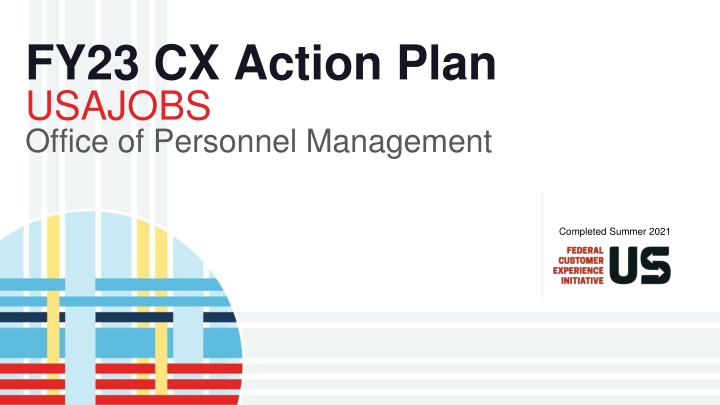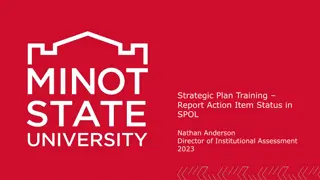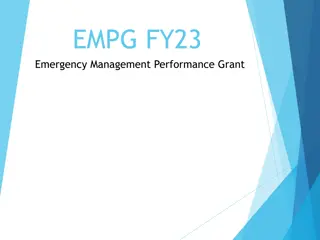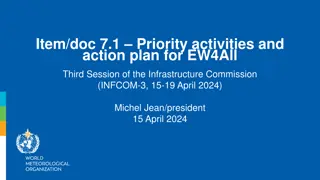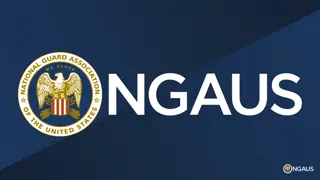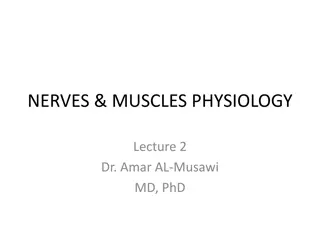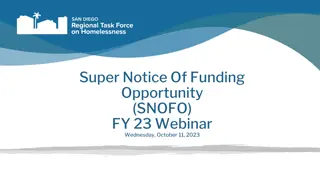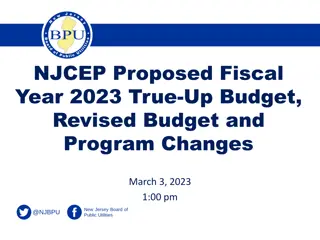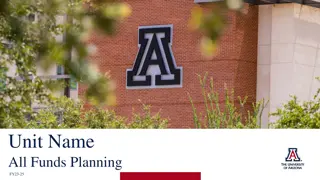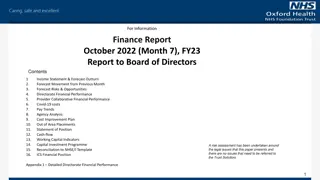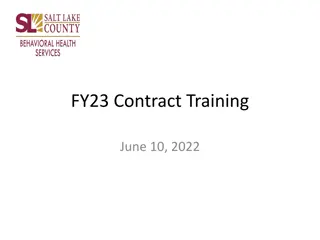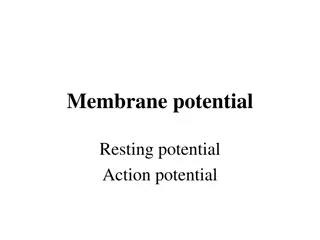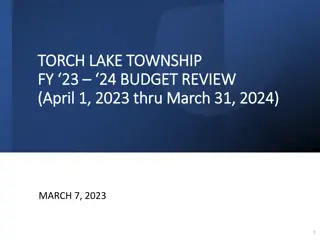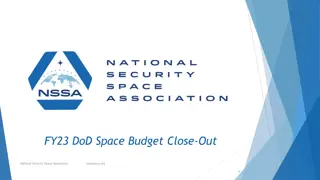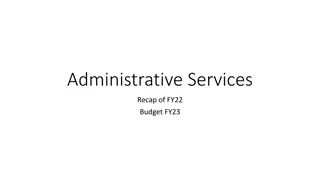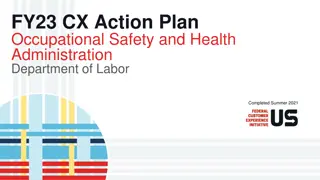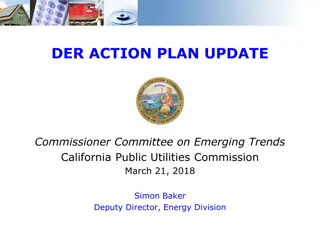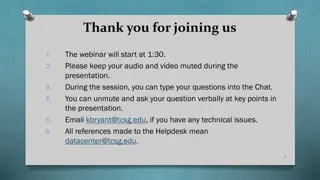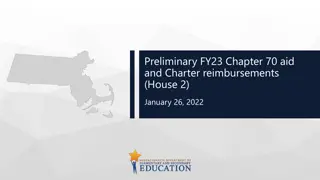FY23 CX Action Plan
In FY 2021, USAJOBS focused on improving governance, strategy, and customer experience. Initiatives included onboarding new leadership to drive a customer-centric approach, partnering with OPM for measurement strategies, and enhancing products based on user research. Areas for improvement identified included governance enhancements, deeper data analysis, and cultural alignment around customer experience concepts.
Download Presentation

Please find below an Image/Link to download the presentation.
The content on the website is provided AS IS for your information and personal use only. It may not be sold, licensed, or shared on other websites without obtaining consent from the author.If you encounter any issues during the download, it is possible that the publisher has removed the file from their server.
You are allowed to download the files provided on this website for personal or commercial use, subject to the condition that they are used lawfully. All files are the property of their respective owners.
The content on the website is provided AS IS for your information and personal use only. It may not be sold, licensed, or shared on other websites without obtaining consent from the author.
E N D
Presentation Transcript
FY23 CX Action Plan USAJOBS Office of Personnel Management Completed Summer 2021
FY21 Capacity Assessment Reflection Summary What we re proud of this year: Culture and Organization: In FY 2021, USAJOBS onboarded a new Design Manager and Customer Experience (CX) Manager. The new leadership staff increases USAJOBS service delivery capacity through strategic direction in managing a customer-centric program. Measurement: USAJOBS partnered with the OPM OCFO Planning, Performance, and Evaluation Team to develop an approach to measure its feature delivery to determine whether product goals achieve results. The process is incorporated into the initial problem framing and scoping activities, and it is updated throughout the development lifecycle. The measurements are captured in dashboards that are reviewed on a periodic basis post-feature launch. Customer Understanding and Service Design: The USAJOBS program oversees the development of three products. Below are three projects that started with user research to understand the needs and expectations of the customer and launched with evaluation plans: Job Status is a feature in https://usajobs.gov designed to deliver greater transparency into the hiring process and ultimately provide closure for applicants. Launched in January 2021, the data shows a decline in help desk issues related to application statuses between February and May 2021. More time is needed to track the applicant satisfaction with the feature and its impact on operations. Skills Matching Minimally Viable Product was deployed in the https://openopps.usajobs.gov (Open Opportunities) platform to assist Federal employees in recommending experiential learning opportunities that best matches the person s skills and interests. This pilot launched in January 2021, and the program continues to assess this feature s validity in providing reliable matches and determining how best to scale skills matching to the other products in the out years. 2 Search Experience is a key feature for the https://agencyportal.usajobs.gov (Agency Talent Portal) platform. The USAJOBS program office conducted user research in the form of analyzing qualitative and quantitative data, as well as interviewing Federal employees onhow they use the search feature. In turn, the program office delivered major search enhancements for the Agency Talent Portal that included booleansearch, new filters, and in-depth help center articles to assist users.
FY21 Capacity Assessment Reflection Summary Where we need to do better: Governance and Strategy: USAJOBS is improving its governance model to increase visibility into the program s roadmap and solicit ongoing feedback from agencies into shaping the priorities. In turn, USAJOBS will collaborate with agencies to focus on the end-to- end customer experience and identify strategies where all stakeholders involved in the Federal recruitment and hiring process can make improvements. Measurement: The USAJOBS program office would like to improve in the area of measurement and data analysis, and conduct deeper analyses of the data collected through the evaluation methods. The program office will place emphasis on data literacy training for the USAJOBS team, as well as experiential learning to expand analysis capacity. Defining data analysis roles and responsibilities throughout the delivery processes is needed for continuity and understanding of user needs across the team. Culture and Organization: In FY 2021, the USAJOBS program office began to share customer experience concepts and best practices across the OPM offices involved in overseeing, executing, and assessing the Federal hiring process. More action is needed to strengthen the buy-in and engagement processes to unify work around the Federal hiring customer experience. 3
Adapting Service During a Global Pandemic USAJOBS was prepared to quickly assess customer needs and deliver three discrete projects as a result of the global pandemic. Project Purpose Results/Outcomes Seeker Portal- Career Page First, USAJOBS created a COVID-19 career page to filter all COVID-19 job opportunities in one place to better market the opportunities. USAJOBS COVID-19 career page: The USAJOBS COVID-19 career page hosted 5,579 job opportunity announcements which netted 871,220 applications started between April 2020 and June 2021. COVID-19 Response Program: The USAJOBS Open Opportunities page hosted 50 new opportunities. One opportunity within Health and Human Services resulted in more than 100 selections. The USAJOBS program developed a lessons learned whitepaper to consider changes for future surge support needs. Second, USAJOBS created a COVID-19 response community in Open Opportunities to allow agencies to find Federal talent to support COVID-19 projects. Open Opportunities COVID-19 Community 4 Peace Corps Support: The USAJOBS program office provided job aids for returning volunteers to make their USAJOBS resume and profile searchable. In turn, the program office provided job aids for agencies to find and potentially hire these volunteers into Federal positions non- competitively. Agency Talent Portal (ATP) - Returning Peace Corps Volunteers Third, USAJOBS supported the Peace Corps, whose 7,000 volunteers need help finding new employment.
HISP Equity Reflection Who is this provider intended to serve? All U.S. citizens primarily over the age of 18. Are there barriers that people of color, people with disabilities, LGBTQ+ people, women, non-native English speakers, and others who have been historically underserved, marginalized, discriminated, and adversely affected by persistent poverty and inequality face with regard to this program or service? How might these individuals interact with your program differently? Individuals with disabilities: Challenges providing clear guidance on the individuals with disabilities hiring authority and what is needed to apply to be considered eligible for certain job announcements. Non-native English speakers: The site is only offered in English. Homeless, including homeless veterans, and applicants located in remote geographic regions: Lack of access to a computer, internet, documents, and resources needed for multi-factor login. Multiple unserved populations: A significant amount of content presented to applicants is not written at appropriate reading levels. 5 LGBTQ+ community: Selective service question for some transgender applicants proves difficult and may impact privacy concerns. In many cases we do not have enough information to identify barriers. We are taking action to conduct more exploration in FY 2022 by incorporating service equity assessments into the delivery processes. Where do we have a knowledge gap about individuals interactions with our service we need evidence to fill? Additional contextual interviews and observation is needed for most of these groups.
FY22 Action Update: Job Status Applicant Count When an applicant logs into their USAJOBS account, they see the jobs they applied to along with the job status (Accepting Applications, Reviewing Applications, Hiring Complete, Job Canceled). Applicants will see a new field along with the job status that shows the total number of applicants who applied to the position. The number of applications will be visible once the job closes and moves into the Reviewing Applications phase. What customer need will this action address? For the job seeker, this feature improves the transparency and perception of the Federal hiring experience. Providing the numberof applicants conveys the competitiveness of the job and the level of effort by the agency to process the applications and move through the hiring process. Why is this a priority? This feature advances the 2020 GAO Study findings on providing updates to applicants during the hiring process (https://www.gao.gov/assets/gao-21-31.pdf). Who is responsible for this action happening? The USAJOBS product team. What action(s) / deliverables / milestones will you take / hit between Oct. 1, 21 Sept. 30, 22? Complete pilot with six agencies that are testing applicant count and analyze results (October 2021). Implement applicant count based on pilot results (November 2021). Include the new applicant count feature in communication activities with Federal agencies and the public (November 2021). Track measures associated with applicant count (November 2021 September 2022). 6 How will you measure whether these actions had their intended effect? Reduced help desk tickets regarding applicant inquiries. What do you need to make this happen? The USAJOBS product team has all resources necessary to implement this feature.
FY22 Action Update: Minimum Profile Minimum profile reduces friction in the profile creation process by only collecting information that is required to apply to a job announcement. What customer need will this action address? Minimum profile will streamline the application process by reducing the amount of time and complexity required to create a profile. The new minimum profile fields will only collect information necessary to apply for a job. Why is this a priority? Customer surveys demonstrate users find the profile fields time consuming and unnecessary. Sample feedback includes, "It was time consuming, and I do not believe all the information requested is necessary." And "I had to skip entering information about my experience because it was tedious." Who is responsible for this action happening? The USAJOBS product team. What action(s) / deliverables / milestones will you take / hit between Oct. 1, 21 Sept. 30, 22? Implement minimum profile (October 2021). Track measures associated with minimum profile (October 2021 September 2022). Assess impacts of minimum profile on users, talent acquisition systems, and hiring agencies (November 2021 September 2022). 7 How will you measure whether these actions had their intended effect? Decrease in the number of active guest accounts. Increase in positive responses to it was easy to complete what I needed to do and it took a reasonable amount of time to do what I needed to do for those job. seekers who had a primary reason of visiting USAJOBS to Create a USAJOBS profile (user satisfaction survey). What do you need to make this happen? The USAJOBS product team has all resources necessary to implement this feature.
FY23 Commit to Action: End-to-end Apply Experience USAJOBS will facilitate user research activities in partnership with key stakeholders to understand the user experience from clicking apply to submitting the final application. The project will include changes to address key pain points with providing documents and responding to questions for eligibility purposes. What customer need will this action address? Streamling the end-to-end application experience will give customers the confidence to apply to jobs quicker, with less friction, and with less redundancies during the application process. Why is this a priority? It is part of an OPM Strategic Plan initiative to improve the applicant satisfaction by 4 points by FY 2026. Who is responsible for this action happening? USAJOBS, Talent Acquisition System partners, and OPM policy and oversight functions. What action(s) / deliverables / milestones will you take / hit between Oct. 1, 22 Sept. 30, 23? Conduct user research (October 2022). Prototype what we learned from research and co-design sessions (November 2022). Begin production work for implementation (January 2023). 8 How will you measure whether these actions had their intended effect? Job seeker and applicant surveys, including focus on improvements to satisfaction. Reduced help desk tickets. Agency feedback. What do you need to make this happen? Strong collaboration between all key stakeholders to include OPM policy and oversight functions, Talent Acquisition System partners, and agencies.
FY23 Commit to Action: Skills Matching USAJOBS introduced skills matching in FY 2021 within Open Opportunities. The purpose of the effort was to test its usefulness and learn how to manage an Artificial Intelligence/Machine Learning solution with proper evaluation and oversight processes. The next use case for skills matching will include incorporating the feature in the USAJOBS Agency Talent Portal to recommend candidates to HR Specialists and hiring managers to recruit candidates. What customer need will this action address? Skills matching will help Federal employees find a range of opportunities based on their profile information and remove the burden of hunting and pecking to find opportunities to that match the person s experience and interests. Why is this a priority? Difficulties with the search experience are exposed in the help desk and survey data requiring attention. The user research surfaced many examples of the challenges job seekers experience searching for job opportunities. Who is responsible for this action happening? The USAJOBS product team. What action(s) / deliverables / milestones will you take / hit between Oct. 1, 22 Sept. 30, 23? Conduct qualitative and quantitative data analysis based on the survey, help desk, web analytics, and user research data collectsince April 2017 (this is when USAJOBS implemented the new search experience and backend technology) (October 2022). Review skills matching results in Open Opportunities and the Agency Talent Portal to determine how to proceed with expanding thefeature into usajobs.gov (November 2022). Assess how to scale Artificial Intelligence/Machine Learning tools and ElasticSearchfeatures for incorporating skills matching (January 2023). Test prototypes with users (March 2023). Begin development (June 2023). 9 How will you measure whether these actions had their intended effect? Positive responses to Was the skills matching feature useful in helping you find an opportunity? (user survey) Number of matched opportunities to which users apply. Frequency of searching for opportunities by skills match (number of user sessions that include visit to Recommended Opportunities tab in profile). What do you need to make this happen? Data science expertise, potentially acquisition of Artificial Intelligence/Machine Learningtools; established governance and operational models to maintain this technology.
